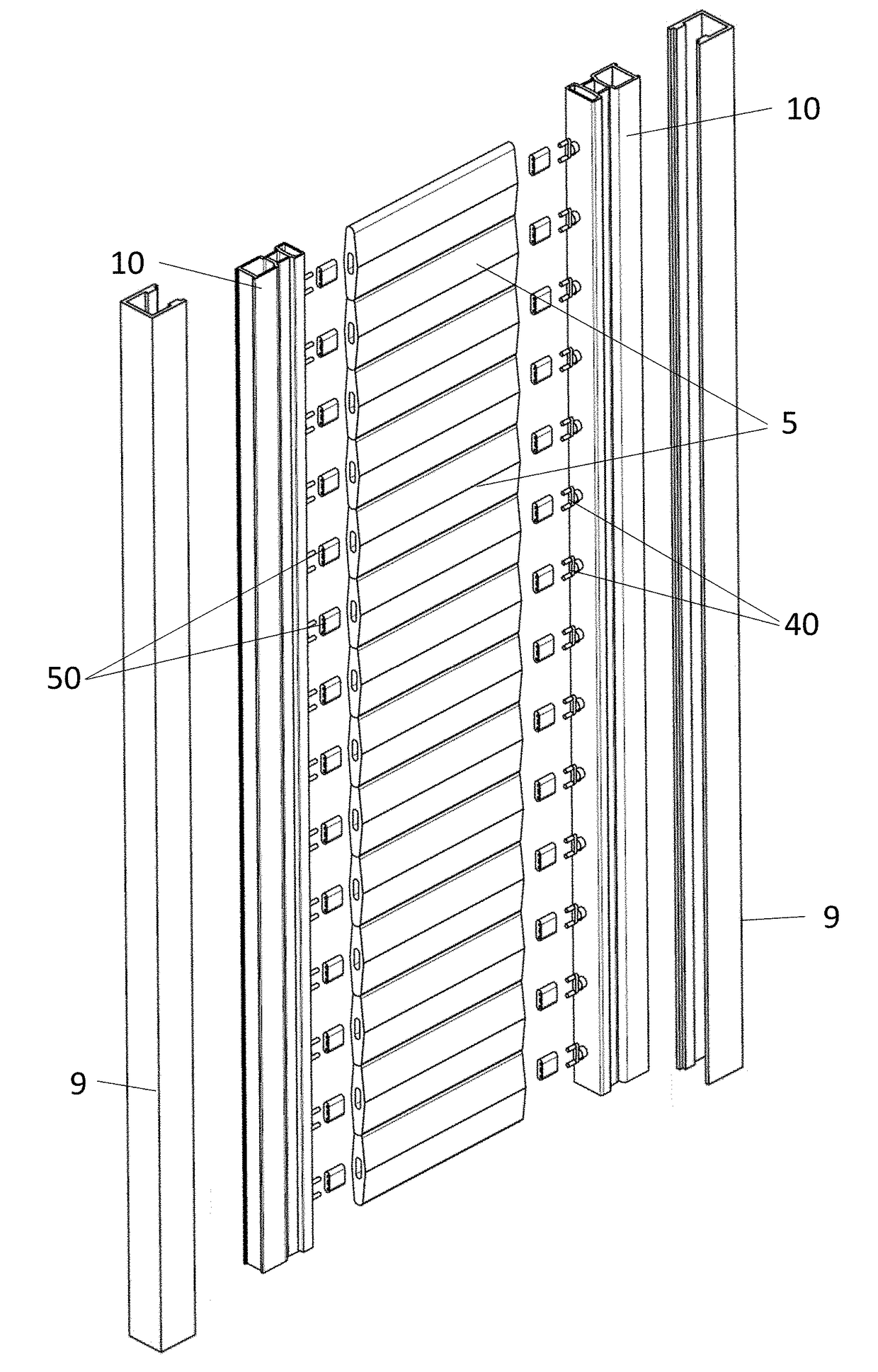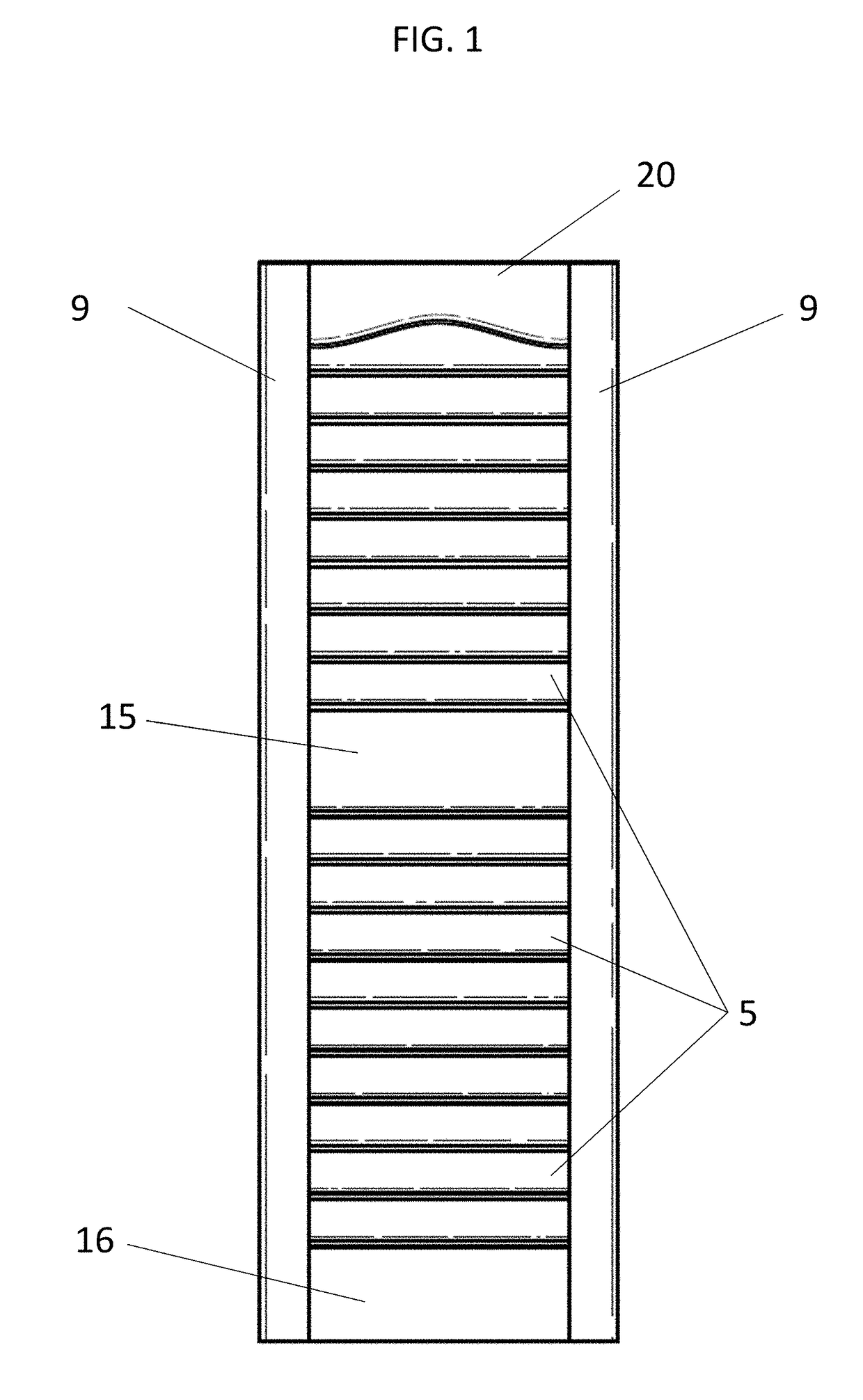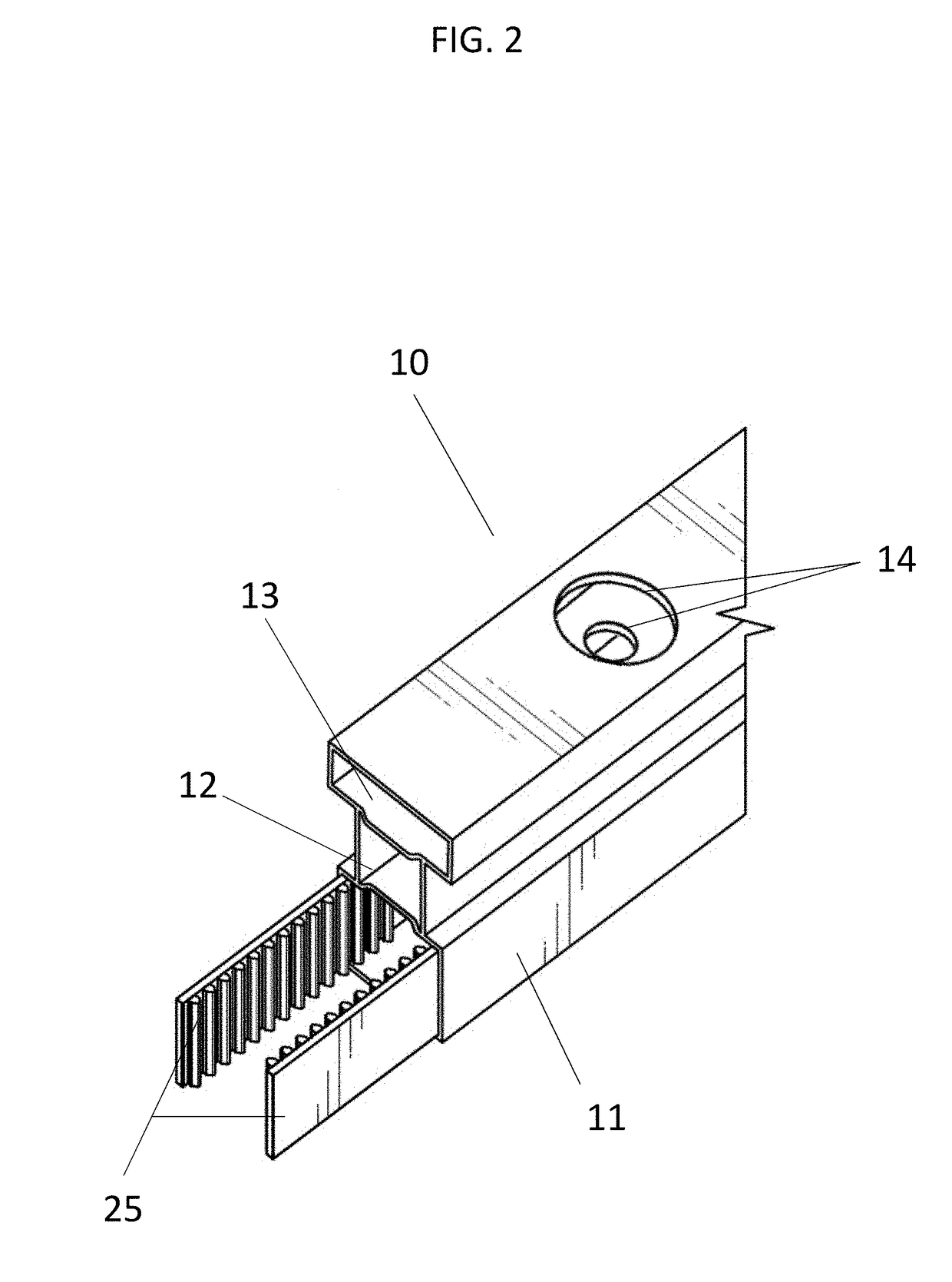Gear Driven Louver Shutter System
- Summary
- Abstract
- Description
- Claims
- Application Information
AI Technical Summary
Benefits of technology
Problems solved by technology
Method used
Image
Examples
Embodiment Construction
[0027]Preferred embodiments of the present invention and their advantages may be understood by referring to FIGS. 1-12, wherein like reference numerals refer to like elements.
[0028]In reference to FIG. 1, a complete shutter assembly is shown, wherein a plurality of louvers 5 have been mounted to the frame members (not shown) and the frame members have been inserted into the stiles 9. In the embodiment, the louvers 5 are positioned horizontally, in another embodiment, the louvers 5 may be positioned vertically (as shown in FIG. 9). In the embodiment, the shutter assembly if further comprised of a midrail 15, a bottom rail 16, and a top rail 20. In another embodiment, the shutter assembly may contain more midrails, bottom rails, top rails, or none at all.
[0029]In reference to FIG. 2, according to an embodiment of the present invention, a frame member 10 is shown with two gear strips 25 inserted into the gear track 11 of the frame member 10. The frame member 10 is further comprised of ...
PUM
 Login to View More
Login to View More Abstract
Description
Claims
Application Information
 Login to View More
Login to View More - R&D
- Intellectual Property
- Life Sciences
- Materials
- Tech Scout
- Unparalleled Data Quality
- Higher Quality Content
- 60% Fewer Hallucinations
Browse by: Latest US Patents, China's latest patents, Technical Efficacy Thesaurus, Application Domain, Technology Topic, Popular Technical Reports.
© 2025 PatSnap. All rights reserved.Legal|Privacy policy|Modern Slavery Act Transparency Statement|Sitemap|About US| Contact US: help@patsnap.com



